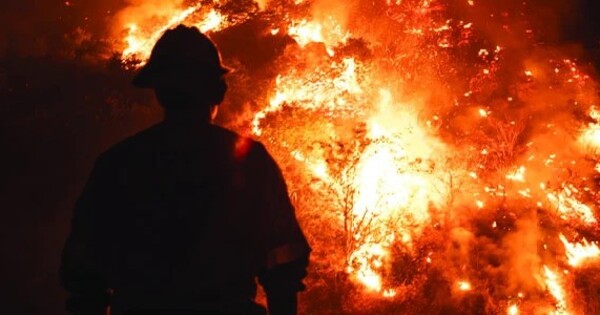According to a new University of Colorado Boulder research of 10,000 9 to 11-year-olds, each additional day of exposure to wildfire smoke and other extreme kinds of polluted air raises the risk of mental illness in youth somewhat more.
“We found that a greater number of days with fine particulate air pollution levels above EPA standards was associated with increased symptoms of mental illness, both during the year of exposure and up to one year later,” said first author Harry Smolker, a research associate at CU’s Institute of Cognitive Science.
The research, published in Environmental Health Perspectives, comes as smoke from Southern California wildfire blankets much of the West, thickening the sky as far away as Las Vegas and sections of Colorado. While annual average air quality has largely improved in recent decades as a result of emissions limits on combustion engines, more frequent fires have produced a new problem: more days with high amounts of microscopic particles of burnt items (also known as particulate matter) in the atmosphere.
“We are entering a new age in which we are experiencing unprecedented levels of exposure to particulates multiple times a year,” according to Smolker. “We need to understand what these extreme events are doing to young people, their brains and their behavior.”
We are entering a new age in which we are experiencing unprecedented levels of exposure to particulates multiple times a year. We need to understand what these extreme events are doing to young people, their brains and their behavior.
Harry Smolker
The pollution, mental health link
While scientists have known for years that air pollution can harm lung and heart health, they’ve only recently begun to explore its impact on cognition and behavior. Some studies show that PM 2.5, particulate matter with a diameter of less than 2.5 micrometers, may be small enough to slip across the blood-brain barrier, inflaming tissue, damaging cells and igniting an immune response that can fuel both acute and longer-term brain changes.
On high pollution days, adults are more likely to be admitted to the hospital for depression, suicide attempts, and psychotic episodes. Studies also show that when pregnant women are exposed to high amounts of particulates, their offspring are more likely to develop motor deficits and cognitive impairments later in life.
Smolker’s research is among the first to investigate potential effects on adolescents, whose brains are still developing. The researchers examined data from 10,000 pre-teens enrolled in the ongoing Adolescent Brain Cognitive Development (ABCD) Study, which is the largest long-term study of brain development and child health ever done in the United States. CU Boulder is one of the 21 ABCD research locations.
They looked at participant addresses and historical air quality data to determine how many days in 2016 youth were exposed to PM2.5 levels above 35 micrograms per cubic meter (35ug/m3) — the level the Environmental Protection Agency deems unsafe.

Approximately one-third were exposed for at least one day beyond the EPA guideline. One individual was subjected to hazardous levels for 173 days. The highest documented level of exposure was 199 micrograms per cubic meter, which is more than five times the recommended level.
When the researchers examined parent questionnaires from four time points over three years, they discovered that, across both genders, each additional day of exposure at unsafe levels increased the likelihood of a youth experiencing depression, anxiety, and other “internalizing symptoms” up to one year later.
This was after accounting for a wide variety of potentially confounding factors, including race, socioeconomic status and, notably, parental mental health. Even when parents did not report symptoms, their children often did.
“This suggests that PM2.5 exposure may have specific impacts on youth distinct from inpacts on their parents,” Smolker said.
Each day counts
Repeated high levels of exposure had a considerably larger impact on risk than annual averages or maximum levels, implying that every day spent breathing unhealthy air mattered. The danger increased with each additional day of hazardous exposure.On a scale of 1 to 50, the average score is 1.01 points.
“This is relatively small, but not trivial,” Smolker said, stressing that PM2.5 is just one of the many contaminants in the “exposome” — the collection of environmental exposures that impact children’s development. “Collectively they can add up.”
Some young people may be genetically inclined to be even more vulnerable to the cognitive and behavioral effects of air pollution, he observes. While particulate matter can come from a variety of sources, including transportation and industry, research co-author Colleen Reid, a geographer with the Institute for Behavioral Science at CU Boulder, believes that the majority of the exposures in the study were caused at least in part by wildfire smoke.
“Wildfire smoke events are becoming more and more common, and this study adds to a growing body of evidence that they can impact our health,” Mr. Reid said.
















